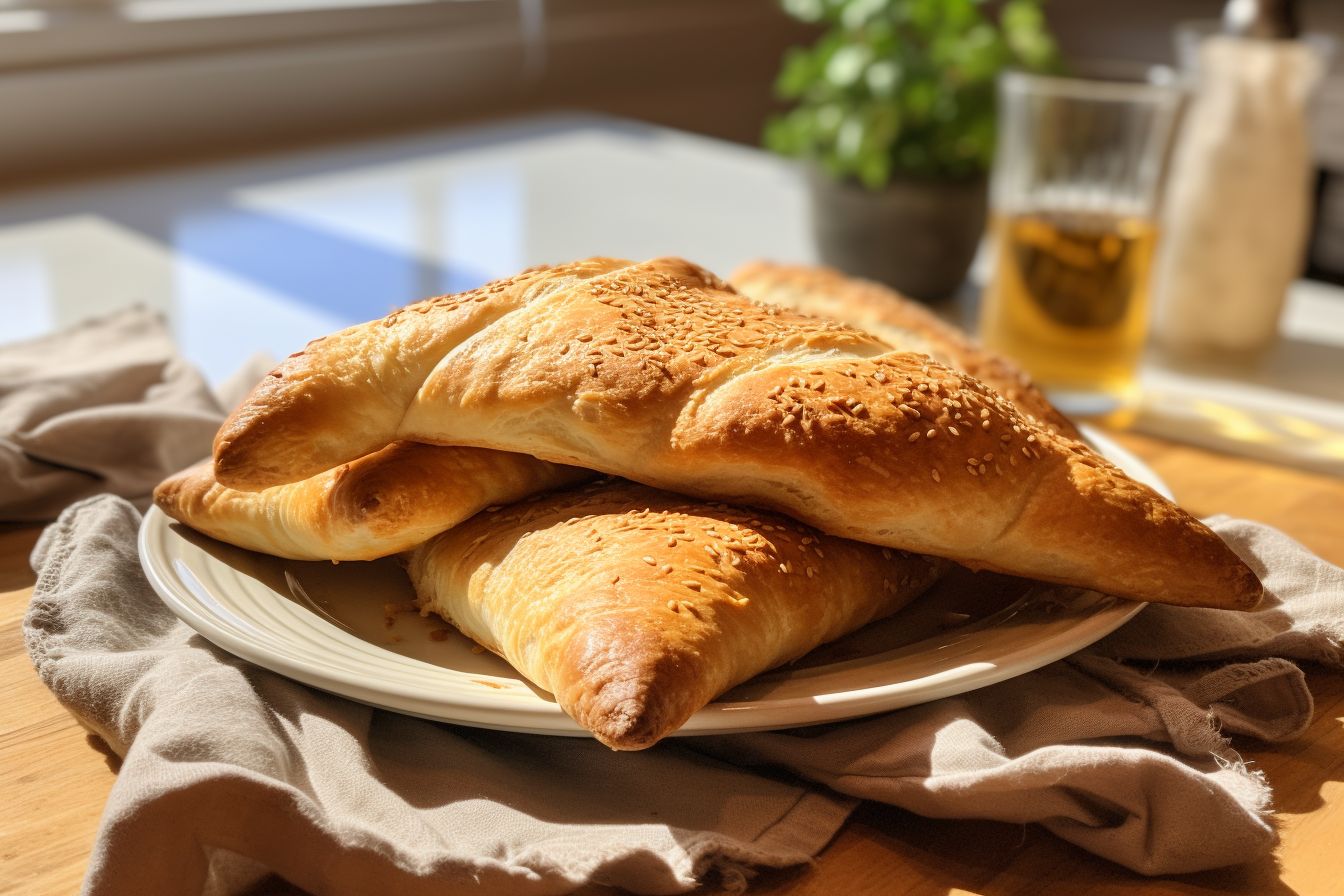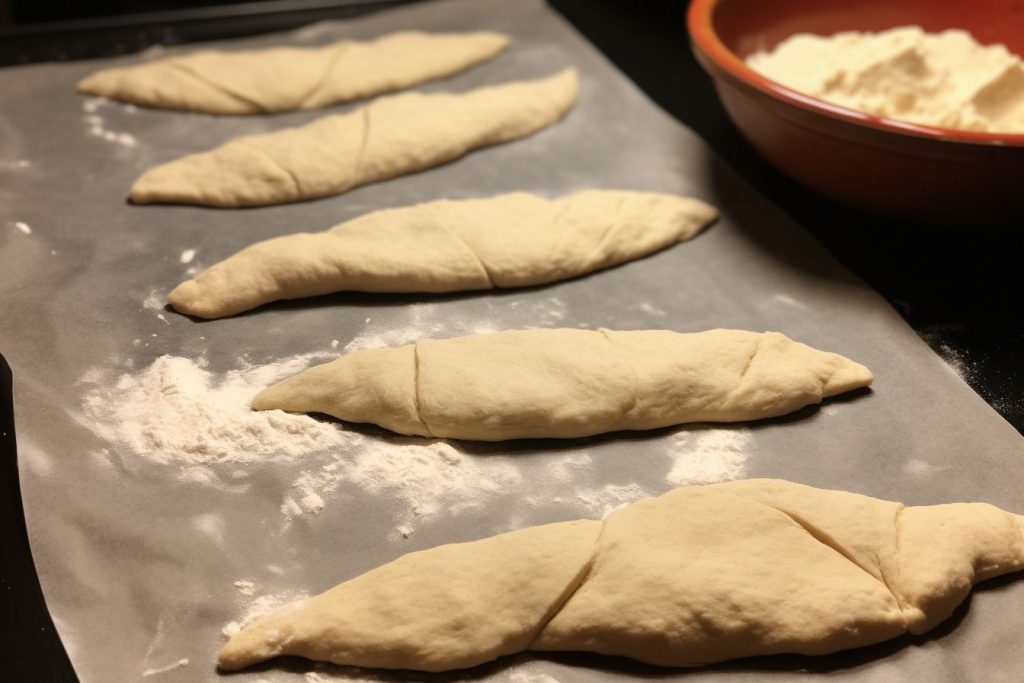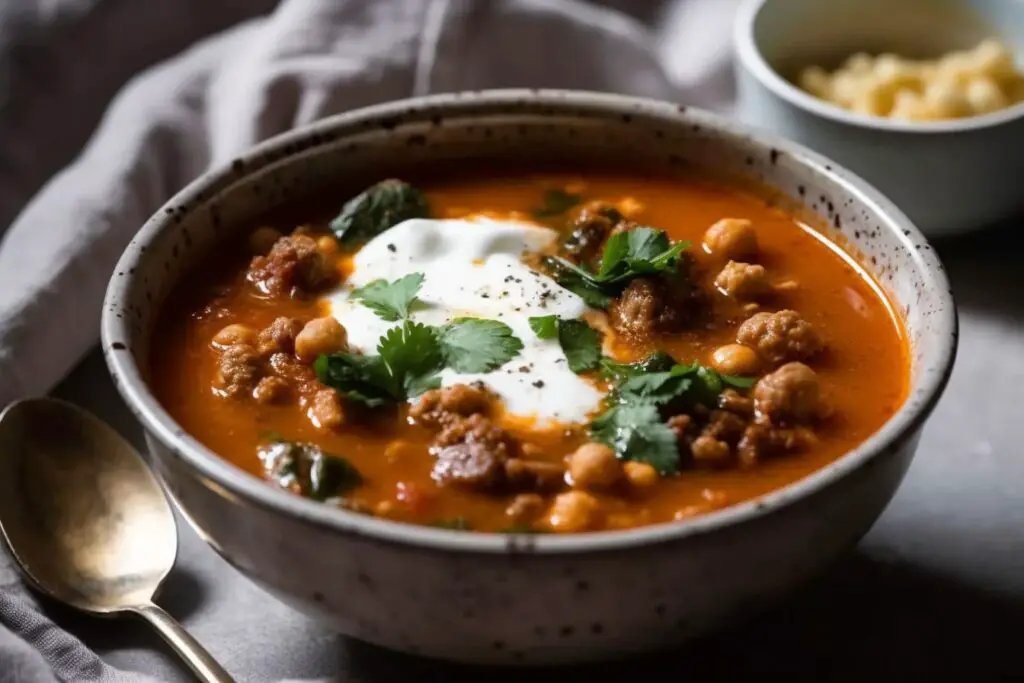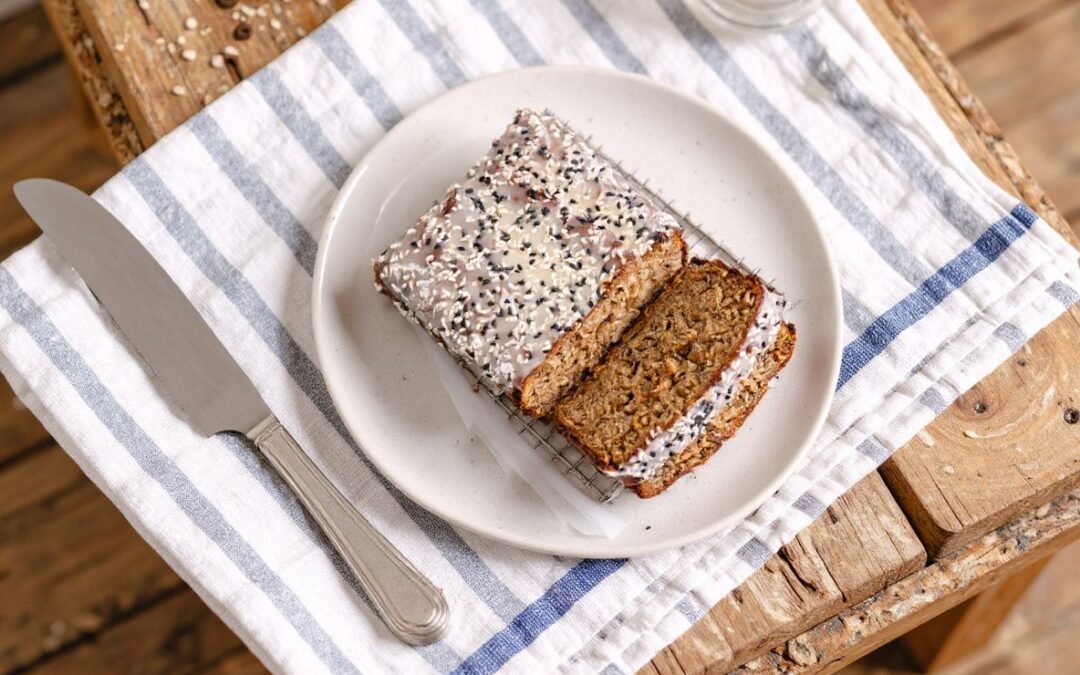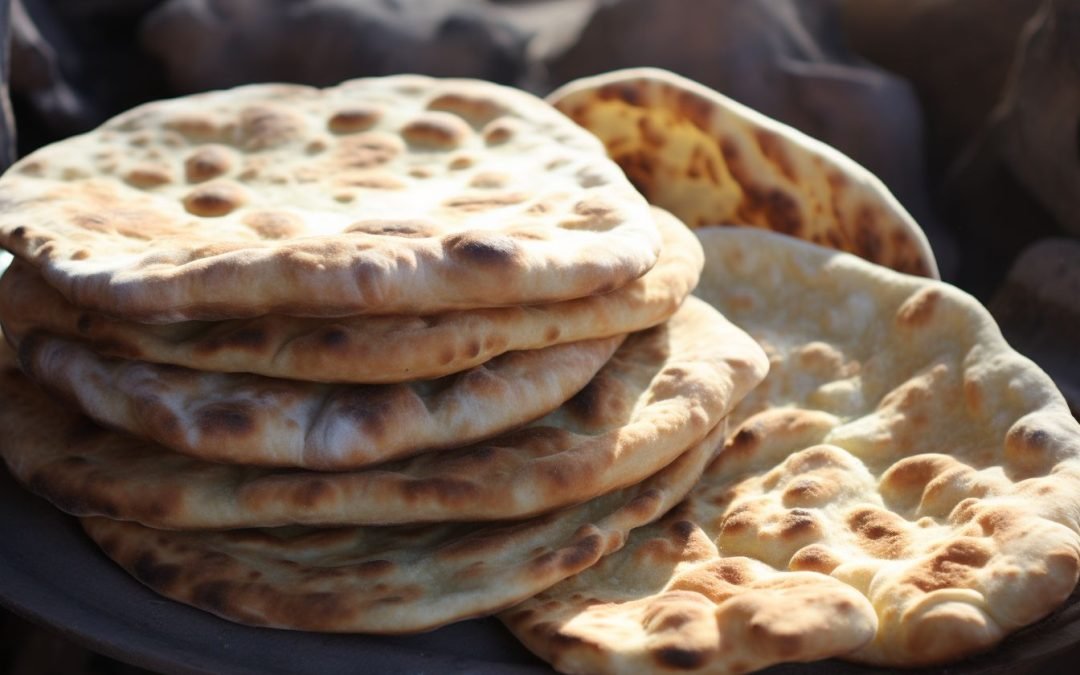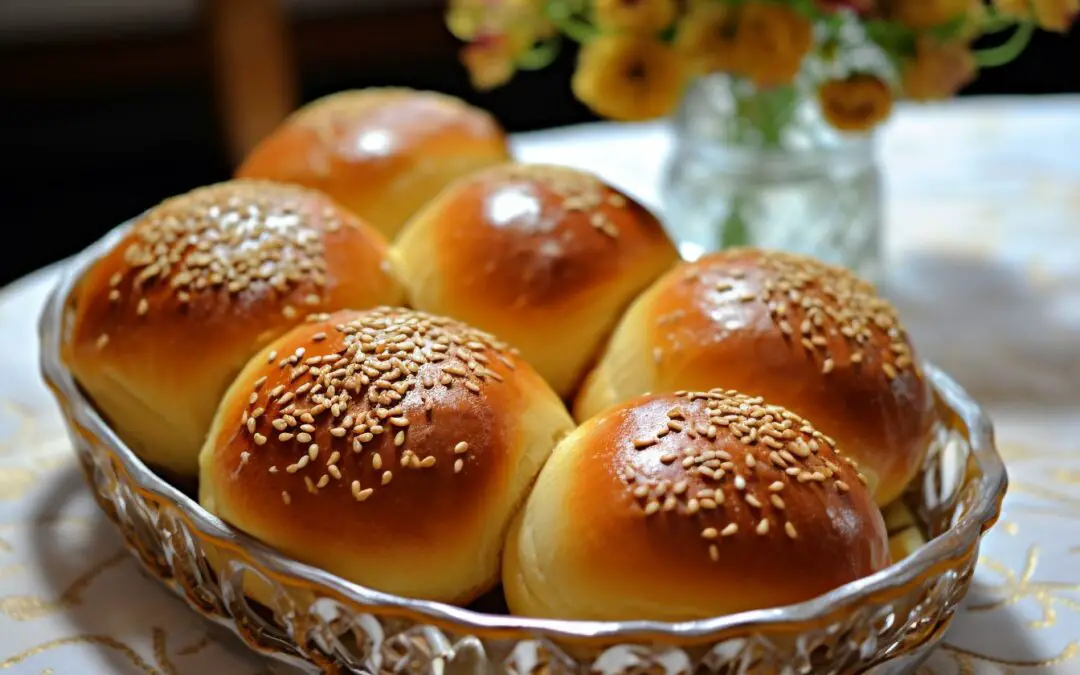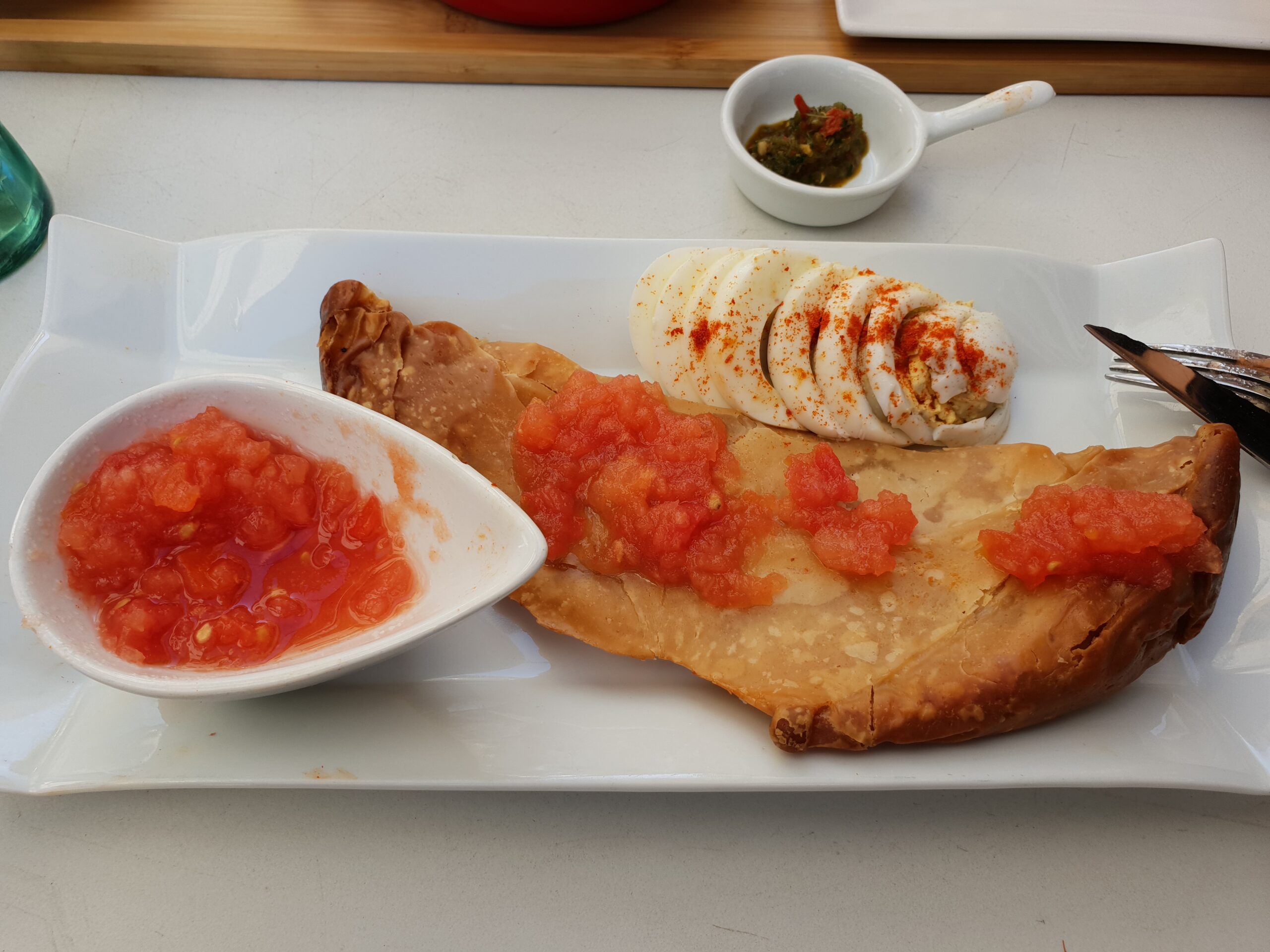I recently discovered the samoon Iraqi bread, a traditional Iraqi bread that has been enjoyed for centuries in the Middle East. It is a soft, fluffy bread that is perfect for sandwiches, dipping in hummus, or simply eating on its own. The bread is made with simple ingredients such as flour, yeast, salt, and water, and is shaped into round or oval shapes before being baked.
Samoon has a unique texture and flavor that sets it apart from other breads. The outside is slightly crispy while the inside is soft and chewy. It has a subtle sweetness that pairs well with savory fillings, making it a popular choice for sandwiches. The bread is also versatile and can be used in a variety of dishes, from breakfast to dinner.
If you haven’t tried samoon before, I highly recommend seeking it out. It is a delicious and satisfying bread that is sure to become a staple in your kitchen. Whether you enjoy it on its own or use it as a base for sandwiches or other dishes, samoon is a bread that is worth trying.
One morning, my spouse and I decided to have breakfast at a Middle Eastern bakery in San Antonio. As we were browsing through the menu, the middle-aged Middle Eastern baker caught our attention and recommended we try the samoon Iraqi bread. We decided to give it a try, and we were not disappointed. The bread had a unique texture and flavor that we had never tasted before.
While we were enjoying our breakfast, one of the bakers accidentally injured himself while working. The commotion settled after a while, and I took the opportunity to request the recipe from the main baker. To my surprise, he agreed to give me the recipe. Here are the ingredients the recipe contained: whole wheat flour, all-purpose flour, active dry yeast, sugar, salt, oil, yogurt, warm water, milk to brush on top, and sesame seeds.
Serving and Pairing Suggestions
When it comes to serving samoon Iraqi bread, there are endless possibilities. As someone who has enjoyed this bread for years, I have come up with a few suggestions that I think you’ll love.
First and foremost, samoon bread is perfect for dipping. Whether you’re using it to scoop up hummus, baba ghanoush, or tzatziki, this bread is the perfect vessel. Its slightly crispy exterior and soft, chewy interior make it the ideal dipping bread.
If you’re looking for a heartier meal, samoon bread makes an excellent sandwich. I love to fill mine with grilled chicken, veggies, and garlic sauce. The bread’s unique flavor and texture add an extra layer of deliciousness to any sandwich.
Another great way to enjoy samoon bread is to pair it with a warm bowl of soup. Whether it’s lentil soup, tomato soup, or chicken noodle soup, this bread makes the perfect side dish. Its ability to soak up the soup’s flavors is unparalleled.
Finally, I love to serve samoon bread alongside a mezze platter. This is a great option if you’re having guests over or just want to enjoy a variety of small bites. Pair the bread with olives, feta cheese, stuffed grape leaves, and other Mediterranean favorites.
In summary, samoon Iraqi bread is a versatile and delicious bread that can be enjoyed in many ways. Whether you’re dipping it, making a sandwich, pairing it with soup, or serving it as part of a mezze platter, this bread is sure to impress.
Ingredients:
- 1 cup of whole wheat flour
- 2 cups of all-purpose flour
- 1 ½ teaspoon of active dry yeast
- 1 tablespoon of sugar
- 1 ½ teaspoon of salt
- 2 tablespoons of oil
- 2 tablespoons of yogurt
- ¾ cup of warm water
- 2 tablespoons of milk to brush on top
- Sesame seeds
How to Make Samoon Iraqi Bread?
Making the dough:
- To make samoon Iraqi bread, start by heating water in a bowl. Start with a little less than a cup and then add more when kneading the dough.
- Then, add sugar and yeast to the warm water and mix it well. Cover the mixture and let the yeast rise for about 10 minutes.
- At the end of 10 minutes, the yeast mixture should be bubbly and frothy, which shows that the yeast is active and working. If the yeast doesn’t become bubbly, begin with a fresh batch.
- Use your stand mixer to knead the dough. Add wheat flour and all-purpose flour to the bowl of the mixer.
- Then, add salt and mix it. Next, incorporate the oil, yogurt, and yeast mixture, then begin kneading the dough. If the dough appears dry, add more warm water to bring it to the right consistency. The dough should be very soft and slightly sticky. Continue kneading the dough for roughly 8 to 10 minutes, then transfer it to an oiled bowl, allowing it to expand until it doubles in size. It should take about an hour when placed in the oven with the proof setting.
Shaping and baking the samoon:
- To shape and bake the samoon, preheat the oven to 450 F and prepare two baking trays with parchment paper.
- Once the dough has doubled in volume, punch it down gently and divide it into 6 equal-sized balls.
- Roll each piece into a smooth ball and then using both your palms, roll the two edges of the dough ball to elongate the edges while keeping the center thick.
- Then, flatten the dough and stretch it while keeping the shape intact.
- Place it on the prepared baking sheet.
- Repeat the same with the rest of the dough.
- Keep the dough ball covered for about 20 minutes or until slightly puffy.
- Then, brush the top of the dough with milk and sprinkle with sesame seeds.
- Finally, bake them for about 15 to 18 minutes or until the samoon is golden brown. Remove it from the oven and let it cool slightly on a rack.
Variations of Samoon Iraqi Bread
As a bread lover, I have always been fascinated by the many variations of this bread. This bread is popular in Iraq and other Middle Eastern countries, and it has a unique texture and flavor that sets it apart from other bread types. In this section, I will discuss some of the most popular variations of the bread.
- One of the most common variations of samoon is the sesame seed version. This bread is made with the same basic ingredients as traditional Samoon bread, but it is coated with sesame seeds before baking. The sesame seeds add a nutty flavor and a crunchy texture to the bread, making it a popular choice for sandwiches and dipping in hummus.
- Another popular variation is the onion version. This bread is made by adding finely chopped onions to the dough before baking. The onions give the bread a sweet and savory flavor that pairs well with grilled meats and vegetables.
- A third variation is the za’atar version. Za’atar is a Middle Eastern spice blend made from thyme, sumac, and sesame seeds. This bread is coated with za’atar before baking, giving it a tangy and slightly spicy flavor that is perfect for dipping in olive oil or hummus.
- Finally, there is the cheese version of samoon. This bread is made by adding a generous amount of feta cheese to the dough before baking. The cheese melts and becomes gooey during baking, creating a savory and delicious bread that is perfect for breakfast or as a snack.
Overall, samoon Iraqi bread is a versatile and delicious bread that can be enjoyed in many different ways. Whether you prefer the traditional version or one of the many variations, there is no denying the appeal of this Middle Eastern staple.
Conclusion
In conclusion, samoon Iraqi bread is a delicious and versatile bread that can be enjoyed in many ways. Its unique texture and flavor make it a popular choice for sandwiches, dips, and as a side to many meals.
One of the great things about samoon bread is how easy it is to make at home. With just a few simple ingredients and some practice, anyone can make their fresh samoon bread.
Overall, I highly recommend trying samoon Iraqi bread if you haven’t already. Its delicious taste and versatility make it a great addition to any meal or snack.
Did you know? Samoon pairs really well with chickpea lamb shawarma soup.
Get the recipe now (by clicking the image below):
